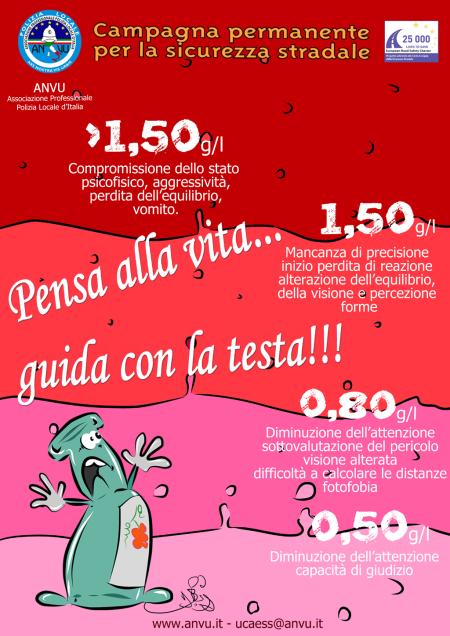Our members are dedicated to improving road safety and sharing their knowledge with the wider community. Here, you can explore our members' good practices – initiatives that have been assessed for their effectiveness in addressing a road safety problem and have proven results.
Get inspired – and sign up to share your good practices too!

Wednesday, June 12, 2024
The thing that worked the best was that absolute majority of people who attended our trainings have realized the need to refresh their driving skills annually and keep returning and spreading the word about our program. The challenge that we encountered was that personal safety reflectors get often get lost and need to be distributed annually instead of being a one-off purchase. We also encountered myths among drivers that driving for many years reduces the risk of having accidents, which is not the case and we worked hard to inform them that no matter the experience, drivers should constantly update their skills and knowledge of the traffic rules.

Wednesday, June 12, 2024
The use of bicycles is becoming more and more common, both at urban and sports level, becoming a healthy and sustainable alternatives that promotes responsible mobility. The increase in the number of cyclists has caused an increase in accidents in which they are involved. According to data from the General Directorate of Traffic, 43 cyclists died on the road in 2022. This poses a new challenge for the authorities, who must promote measures for the protection of these particularly vulnerable users. The Detection and Alert System for cyclists on the Road deal with this problem. This equipment is designed to alert drivers of the presence of cyclists on the road with sufficient advance notice, allowing them to adapt their driving by reducing speed and/or increasing the safety distance. Prevention is configured as a necessary element to reduce accident rates. When it detects the presence of cyclists on the road, the system sends an alert to the intelligent LED warning signage for drivers to turn it on, reinforcing the message through a text display.When this circumstance ceases, the signal remains off, contributing to the objectives of sustainability and energy efficiency.

Wednesday, June 12, 2024
Eines der zentralen Probleme im Bereich der Straßenverkehrssicherheit, mit denen wir uns als Radfahrschule beschäftigen, ist die mangelnde praktische Verkehrserziehung von Kindern. Insbesondere bei modernen Verkehrsmitteln wie (E-) Scootern besteht eine erhebliche Lücke in der Ausbildung, was zu Unsicherheiten und einem erhöhten Unfallrisiko führt. Kinder fahren häufig ohne Helm und auf Gehsteigen zur Schule, was rechtlich bedenklich und gefährlich ist. Viele unterschätzen, dass auch der (E-) Scooter ein richtiges Handling benötigt, damit auch er sicher im Straßenverkehr eingesetzt werden kann. Zudem sind viele Eltern und Lehrkräfte schlicht nicht ausreichend über die gesetzlichen Vorgaben und Sicherheitsstandards informiert. Diese Wissenslücken tragen zur Verbreitung unsicherer Praktiken und zu vermeidbaren Unfällen bei.
Zudem sehen wir das fehlende Bewusstsein für die Bedeutung einer nachhaltigen Mobilität weiterhin als Herausforderung. In einer Zeit, in der Umweltbewusstsein und klimafreundliche Verkehrslösungen immer wichtiger werden, ist es entscheidend, Kinder frühzeitig für diese Themen zu sensibilisieren. Unsere Scooter Kurse setzen genau hier an: Sie verbinden theoretische und praktische Schulung, um Kindern nicht nur die technischen Fähigkeiten für ein sicheres Fahren beizubringen, sondern auch ein tiefes Verständnis für Verkehrsregeln und Umweltaspekte zu vermitteln.
Zudem sehen wir das fehlende Bewusstsein für die Bedeutung einer nachhaltigen Mobilität weiterhin als Herausforderung. In einer Zeit, in der Umweltbewusstsein und klimafreundliche Verkehrslösungen immer wichtiger werden, ist es entscheidend, Kinder frühzeitig für diese Themen zu sensibilisieren. Unsere Scooter Kurse setzen genau hier an: Sie verbinden theoretische und praktische Schulung, um Kindern nicht nur die technischen Fähigkeiten für ein sicheres Fahren beizubringen, sondern auch ein tiefes Verständnis für Verkehrsregeln und Umweltaspekte zu vermitteln.

Tuesday, June 11, 2024
Sensibilizzare l'opinione pubblica sull'importanza del rispetto delle regole del codice della strada, che molto spesso viene trascurato a causa della fretta e molte volte della mancanza di consapevolezza sulle conseguenze delle proprie azioni è una sfida primaria
a cui bisogna aggiungere l'aggiornamento continuo dell'educazione stradale. Bisogna tenere il passo con l'evoluzione delle tecnologie delle autovetture molti utenti acquistano auto con livelli tecnologici di sicurezza molto avanzati che non sanno riconoscere e in conseguenza utilizzare, incluso l'uso responsabile dei dispositivi mobili alla guida.
E' fondamentale garantire che gli enti proprietari delle strade siano informati e sensibili nel mantenerle sicure cercando di minimizzare i rischi di incidenti, con adeguata segnaletica ed illuminazione nonché eliminando insidie sul manto stradale rendendole più sicure.
Infine, forse la sfida più grande è di cambiare la "cultura della guida", promuovendo comportamenti più responsabili e più rispettosi non per la paura di incorrere in sanzioni, ma per paura di fare del male ad altri utenti, rispettandone la vita.
a cui bisogna aggiungere l'aggiornamento continuo dell'educazione stradale. Bisogna tenere il passo con l'evoluzione delle tecnologie delle autovetture molti utenti acquistano auto con livelli tecnologici di sicurezza molto avanzati che non sanno riconoscere e in conseguenza utilizzare, incluso l'uso responsabile dei dispositivi mobili alla guida.
E' fondamentale garantire che gli enti proprietari delle strade siano informati e sensibili nel mantenerle sicure cercando di minimizzare i rischi di incidenti, con adeguata segnaletica ed illuminazione nonché eliminando insidie sul manto stradale rendendole più sicure.
Infine, forse la sfida più grande è di cambiare la "cultura della guida", promuovendo comportamenti più responsabili e più rispettosi non per la paura di incorrere in sanzioni, ma per paura di fare del male ad altri utenti, rispettandone la vita.

Tuesday, June 11, 2024
The SWARCO Lighthouse Project Young Mobility Ambassadors Program was launched in Austria in January 2024 with the aim to become a long-term project with a positive impact on society, focusing on the most vulnerable group in traffic - young people aged 14 to 19. According to statistics, distraction and risk-taking are the main causes of accidents among this group. With this project, we want to motivate young people to actively think about how they can move intelligently and safely in our rapidly changing world of mobility. The project consists of 3 pillars: Road Safety Survey, SWARCO Award and Educational Materials.